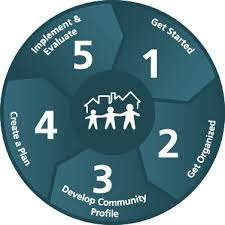Framework
ROAR uses an evidence-based, upstream prevention model to identify shared risk and protective factors in our community. ROAR works on identifying gaps and barriers in the community to work towards shared goals and objectives to help support a healthy community.
Communities that Care
Communities That Care is a prevention structure grounded in science. It gives communities the tools to address adolescent health and behavior problems through a focus on evidence-based risk and protective factors. Learn more about Communities That Care.
Positive Youth Development
Positive Youth Development is an intentional, social approach that engages youth within their communities, schools, organizations, peer groups, and families in a manner that is productive and constructive. It focuses on recognizing, utilizing, and enhancing young people’s strengths. Positive Youth Development promotes positive outcomes for young people by providing opportunities, fostering positive relationships, and furnishing the support needed to build on their leadership strengths. Learn more about Positive Youth Development.
Shared Risk & Protective Factors
Shared Risk and Protective Factors identify upstream and systemic factors that can impact a person’s risk for negative health outcomes, such as substance misuse. These social determinants of health are part of the environment where people live, learn, work, and play.
Risk factors are characteristics at the biological, psychological, family, community, or cultural level that precede and are associated with a higher likelihood of negative outcomes.
Protective factors are characteristics associated with a lower likelihood of negative outcomes or that reduce a risk factor’s impact.
By identifying and addressing these root causes and conditions early, the goal is to prevent negative health outcomes before they event start. Learn more about Shared Risk & Protective Factors.




